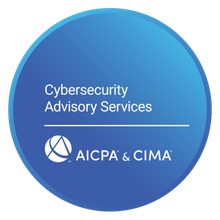FTC Safeguards Rule for Tax Preparers: Protecting Client Data in 2023
The landscape of tax preparation is evolving rapidly, and in today's digital age, safeguarding sensitive client data is not just a choice – it's a necessity. Welcome to our comprehensive guide on FTC Safeguards Rule for Tax Preparers: Protecting Client Data in 2023. In the coming sections, we will embark on a journey to demystify the complexities of data security regulations, with a specific focus on how tax preparers can navigate the intricacies of the FTC Safeguards Rule.
At the heart of tax preparation lies a fundamental trust between you and your clients. They entrust you with their most sensitive financial information, making it your responsibility to ensure that their data remains secure from potential threats. The FTC Safeguards Rule is a pivotal component in this ongoing mission, and understanding and implementing it is critical to the success and sustainability of your tax preparation business.
Navigating the Path to FTC Safeguards Rule Compliance
We understand that cybersecurity compliance may seem like a daunting task, but rest assured, this guide is here to simplify the process. Whether you're a seasoned tax preparer or just starting your journey, we'll provide you with the knowledge and resources needed to navigate the path to FTC Safeguards Rule compliance effectively.
In the following sections, we'll delve into the specifics of the FTC Safeguards Rule, who it applies to, and the legal obligations it imposes. We'll provide practical steps, insights, and best practices that you can implement to secure your clients' data while adhering to regulatory standards.
Ready to get started on the path to compliance? Download our FTC Safeguards Rule Checklist to track your progress and ensure you're taking the right steps to protect your clients' data.
So, let's embark on this journey together, ensuring that your tax preparation business not only meets regulatory requirements but also maintains the trust and confidence of your valued clients. In the next section, we'll demystify the FTC Safeguards Rule and explore who needs to comply with it.
Understanding the FTC Safeguards Rule
Before diving into the nitty-gritty details of compliance, it's essential to have a clear understanding of what the FTC Safeguards Rule is and why it matters to tax preparers.
What is the FTC Safeguards Rule?
The FTC Safeguards Rule, officially known as the "Safeguards Rule for Financial Institutions and Customer Information," is a regulation established by the Federal Trade Commission (FTC) to address the protection of sensitive customer information held by financial institutions, including tax preparers. It sets specific requirements and standards for data security practices, aiming to ensure the confidentiality and security of clients' non-public personal information.
Why Does the FTC Safeguards Rule Matter to Tax Preparers?
Tax preparers handle a wealth of sensitive client data, including social security numbers, financial statements, and other personal information. This data is a prime target for cybercriminals. The FTC Safeguards Rule is relevant to tax preparers because it holds them accountable for safeguarding this valuable information.
Who Needs to Comply?
Determining whether the FTC Safeguards Rule applies to your tax preparation business is a crucial first step in your compliance journey.
Applicability to Tax Preparers
The FTC Safeguards Rule applies to financial institutions, which includes tax preparers who meet specific criteria. While the rule may not affect every tax preparer, it's essential to understand its relevance to your specific business model.
Factors to Consider for Compliance
Factors that may make the FTC Safeguards Rule applicable to your tax preparation business include:
- The type of client information you collect and store.
- The volume of non-public personal information (NPPI) you handle.
- Whether you have third-party service providers who access NPPI.
In the next subsection, we'll explore the legal obligations that the FTC Safeguards Rule imposes on tax preparers, shedding light on what you need to do to ensure compliance.
Curious about whether the FTC Safeguards Rule applies to your business? Download our FTC Safeguards Rule Guide for a detailed explanation.
Now that you have a clear understanding of what the FTC Safeguards Rule is and its applicability, let's dive deeper into the specific legal obligations it entails for tax preparers in the next subsection.
Key Requirements of the FTC Safeguards Rule
The FTC Safeguards Rule outlines several key requirements that tax preparers must meet to ensure the security of client data. By comprehending and implementing these requirements, you can take significant strides towards achieving compliance and bolstering data protection in your tax preparation business.
A. Risk Assessment
Before you can effectively protect client data, it's crucial to identify potential vulnerabilities in your data security practices. Conducting a comprehensive risk assessment is the first step in this process.
Why Conduct a Risk Assessment?
- Customized Security: A risk assessment helps tailor your security measures to your specific business needs.
- Early Threat Detection: Identifying vulnerabilities early allows you to address them before they can be exploited.
Assessing Cybersecurity Risks
Tax preparers must assess cybersecurity risks specific to their industry and operations. This includes understanding the types of threats that could compromise client data and the potential impact of these breaches.
Steps to Assessing Risks
- Identify Assets: Determine what data you collect and store, where it's located, and who has access to it.
- Threat Identification: Identify potential threats and vulnerabilities, such as phishing, malware, or insider threats.
- Risk Analysis: Evaluate the likelihood and potential impact of these threats on your business and clients.
By conducting a risk assessment, you'll be better equipped to tailor your data security measures to address the specific challenges your tax preparation business faces.
B. Data Security Policies and Procedures
To safeguard client data, it's essential to have robust data security policies in place. These policies serve as the framework for how your business approaches data security.
Why Policies Matter
- Consistency: Policies ensure that security measures are consistently applied throughout your organization.
- Guidance: They provide guidance to employees on how to handle sensitive information securely.
Implementing Procedures
Policies alone are not enough; you must also implement procedures that translate these policies into actionable steps. Effective procedures ensure that your policies are put into practice.
Developing Procedures
- Access Control: Define who has access to client data and under what circumstances.
- Data Encryption: Specify how and when data should be encrypted.
- Incident Response: Create procedures for responding to data breaches and security incidents.
Ready to draft your data security plan? Download our Data Security Plan Template to kickstart the process.
In the next subsection, we'll explore the critical role of employee training in maintaining data security and FTC Safeguards Rule compliance.
C. Employee Training
In the realm of cybersecurity, your employees are the first line of defense and, potentially, the weakest link. The FTC Safeguards Rule recognizes the critical role that well-trained employees play in maintaining data security.
Why Employee Training Matters
- Security Awareness: Trained employees are more likely to recognize and respond to security threats.
- Compliance: Training ensures that employees understand their responsibilities under the FTC Safeguards Rule.
Building Vigilance
Effectively training your staff to be vigilant against cyber threats is a proactive approach to data security. Here's how you can achieve this:
1. Security Awareness Training: Provide employees with training sessions that cover cybersecurity best practices, common threats, and how to identify phishing attempts.
2. Regular Updates: Keep your staff informed about evolving threats and cybersecurity updates. Cyber threats are constantly changing, so ongoing education is crucial.
3. Simulated Phishing Tests: Conduct simulated phishing tests to assess employees' ability to recognize phishing attempts. Use these tests as opportunities for further training.
4. Reporting Mechanisms: Establish clear reporting mechanisms for employees to report suspicious activities or security incidents. Encourage open communication to foster a culture of security.
5. Role-Based Training: Tailor training to specific job roles within your tax preparation business. For example, receptionists may need different training than IT administrators.
By investing in employee training, you empower your team to be proactive in identifying and mitigating security risks, reducing the likelihood of data breaches.
Looking for a comprehensive training resource? Download our Employee Training Guide to equip your team.
In the subsequent subsection, we'll explore the importance of regular monitoring and updates to ensure your data security measures remain effective and up-to-date.
D. Regular Monitoring and Updates
Cyber threats are constantly evolving, making regular monitoring of your data security measures essential to maintain the integrity of your client data and comply with the FTC Safeguards Rule.
Why Regular Monitoring Matters
- Threat Detection: Ongoing monitoring helps detect potential security threats in real-time.
- Compliance Assurance: Regular assessments demonstrate your commitment to complying with the FTC Safeguards Rule.
Keeping Policies Up to Date
As cyber threats evolve, so should your data security policies and procedures. Stagnant policies may become ineffective or inadequate over time.
Recommendations for Keeping Policies Current
-
Regular Review: Schedule periodic reviews of your data security policies to identify any gaps or areas that need improvement.
-
Incident Response Testing: Conduct regular testing of your incident response plan to ensure it is up-to-date and effective.
-
Employee Feedback: Encourage employees to provide feedback on policies and procedures they find challenging or outdated.
-
Stay Informed: Stay informed about emerging cybersecurity threats and best practices to inform policy updates.
By regularly monitoring and updating your data security measures, you ensure that your tax preparation business remains resilient in the face of evolving cyber threats.
Ready to assess your cybersecurity readiness? Download our Incident Response Plan Template to create a customized plan.
In the next section, we'll delve into data protection best practices, including encryption, secure storage, and access control, to further strengthen your data security efforts.
Data Protection Best Practices
When it comes to protecting client data, adopting best practices is paramount. In this section, we'll delve into crucial data protection measures that can safeguard sensitive information from cyber threats.
A. Encryption and Secure Storage
Data encryption is a powerful tool in the fight against data breaches. It involves converting information into an unreadable format, which can only be decrypted with the right key.
Why Data Encryption Matters
- Confidentiality: Encrypted data remains confidential, even if unauthorized users gain access to it.
- Regulatory Compliance: Encryption aligns with the FTC Safeguards Rule requirements and other data protection regulations.
Storing Sensitive Information
Secure storage practices are equally important. Storing data securely minimizes the risk of data breaches.
Best Practices for Secure Storage
- Access Controls: Limit access to sensitive data to only those who need it for their job responsibilities.
- Data Backups: Regularly back up data to prevent data loss in case of unexpected incidents.
- Physical Security: Protect physical data storage devices, such as hard drives or servers, from theft or damage.
B. Access Control
Controlling who has access to client data is a fundamental aspect of data security. Unauthorized access can lead to data breaches.
Effective Access Control Measures
- User Authentication: Implement strong authentication mechanisms, such as two-factor authentication, to ensure only authorized personnel can access data.
- Role-Based Access: Assign specific access levels and permissions based on job roles to limit access to necessary information.
Implementing Access Control Measures
Access control measures should be part of your broader data security strategy.
Steps to Implement Access Control
- Regular Review: Periodically review and update access control policies to ensure they remain effective.
- Employee Training: Train employees on the importance of access control and how to follow access policies.
- Audit Trails: Implement audit trails to track who accesses sensitive data and when.
In the next subsection, we'll explore the importance of having an incident response plan in place and outline the key components of an effective plan.
C. Incident Response Plan
No matter how comprehensive your data security measures are, no system is entirely foolproof. That's why having an incident response plan is crucial.
Why an Incident Response Plan Matters
- Swift Action: A well-defined plan enables your team to respond quickly and effectively in the event of a data breach or security incident.
- Damage Control: The ability to contain and mitigate the impact of a breach can minimize potential harm to your clients and business.
Key Components
An effective incident response plan consists of several key components that guide your team in responding to security incidents.
1. Incident Response Team: Designate a team responsible for managing and responding to incidents. Clearly define roles and responsibilities.
2. Incident Identification: Implement systems and procedures for detecting and reporting security incidents promptly.
3. Incident Classification: Categorize incidents based on severity to prioritize responses.
4. Containment and Eradication: Take immediate steps to contain the incident and eliminate the threat from your systems.
5. Communication Plan: Outline how and when to communicate with clients, employees, and regulatory authorities.
6. Recovery Procedures: Develop procedures for restoring normal operations and minimizing downtime.
7. Documentation: Keep detailed records of the incident, actions taken, and lessons learned for future improvements.
8. Testing and Training: Regularly test and update your incident response plan. Ensure all employees are trained on their roles during an incident.
By having a well-prepared incident response plan in place, you can mitigate the impact of security incidents and demonstrate your commitment to safeguarding client data.
Want to create your incident response plan? Download our Incident Response Plan Template to get started.
In the next section, we'll delve into third-party risk management, exploring the role of third-party service providers in the tax preparation industry and providing guidance on assessing and managing third-party cybersecurity risks.
Third-Party Risk Management
In today's interconnected business landscape, tax preparers often rely on third-party service providers to streamline operations and enhance efficiency. However, entrusting sensitive client data to these external partners introduces potential security risks.
The Importance of Third-Party Risk Management
Understanding the role that third-party service providers play and managing the associated risks are vital steps in ensuring data security.
Assessing and Managing Third-Party Risks
Effectively managing third-party cybersecurity risks requires a proactive approach. Here's how you can assess and mitigate these risks:
1. Due Diligence: Before partnering with a third-party service provider, conduct thorough due diligence. Assess their data security practices, compliance with relevant regulations, and history of data breaches.
2. Vendor Contracts: Establish clear expectations regarding data security in vendor contracts. Define data protection responsibilities, audit rights, and breach notification requirements.
3. Ongoing Monitoring: Regularly monitor third-party service providers' data security practices. Ensure they continue to meet agreed-upon standards.
4. Data Encryption: Ensure that data transmitted to or from third-party providers is encrypted to protect it from interception.
5. Incident Response Coordination: Establish procedures for coordinating incident responses with third-party providers in case of a data breach.
6. Data Access Controls: Limit the data access provided to third-party partners to the minimum necessary for their services.
By diligently assessing and managing third-party cybersecurity risks, you can protect your clients' data throughout its lifecycle, from collection to processing and storage.
In the next section, we'll dive into reporting and recordkeeping, explaining the reporting requirements of the FTC Safeguards Rule and the importance of maintaining accurate records to demonstrate compliance.
Reporting and Recordkeeping
The FTC Safeguards Rule imposes specific reporting obligations on tax preparers regarding data breaches and security incidents. Compliance with these requirements is essential to meet regulatory standards and ensure transparency.
Reporting Responsibilities Under the FTC Safeguards Rule
-
Timely Reporting: Tax preparers must promptly report security incidents and data breaches to the appropriate authorities and affected individuals when required.
-
Regulatory Notifications: Familiarize yourself with the specific reporting requirements outlined in the rule, including when and how to notify the FTC and other relevant entities.
The Importance of Recordkeeping
Accurate recordkeeping is not only a compliance requirement but also a valuable tool for demonstrating your commitment to data security. It serves as evidence of your diligence in safeguarding client data.
Key Aspects of Recordkeeping
-
Policy Documentation: Maintain records of your data security policies, procedures, and their updates over time.
-
Incident Documentation: Document all security incidents, including your responses, resolutions, and lessons learned.
-
Training Records: Keep records of employee training sessions, demonstrating your commitment to staff education.
-
Vendor Contracts: Maintain copies of contracts and agreements with third-party service providers, including their data security commitments.
-
Audit Trail Records: Preserve audit trail records that detail who accessed sensitive data and when.
By keeping meticulous records, you not only meet regulatory requirements but also establish a strong foundation for data security and demonstrate your dedication to safeguarding client information.
In the next section, we'll delve into the consequences of non-compliance with the FTC Safeguards Rule, including legal penalties and reputational damage, to emphasize the importance of adherence to data security regulations.
Consequences of Non-Compliance
Failure to comply with the FTC Safeguards Rule can result in significant legal penalties for tax preparers. These penalties are imposed as a means to hold businesses accountable for safeguarding client data.
Potential Legal Consequences
-
Financial Penalties: Non-compliant businesses may face substantial fines, which can vary depending on the severity of the violation and the number of affected individuals.
-
Legal Action: Individuals affected by data breaches resulting from non-compliance may take legal action against the tax preparer, leading to costly lawsuits and settlements.
-
Regulatory Actions: Regulatory agencies may investigate non-compliant businesses, potentially leading to enforcement actions, additional fines, or sanctions.
Reputational Damage
In addition to legal repercussions, non-compliance can result in severe reputational damage for tax preparers. Trust is a crucial component of any successful tax preparation business, and a data breach or security incident can erode that trust.
The Impact on Reputation
-
Loss of Client Trust: A data breach can lead to a loss of client trust, potentially resulting in a decline in customer base and revenue.
-
Negative Publicity: Data breaches often attract media attention, which can tarnish the reputation of your business and lead to negative publicity.
-
Client Attrition: Clients may choose to take their business elsewhere if they feel their data is not adequately protected.
-
Long-Term Damage: Rebuilding trust and reputation after a data breach can be a lengthy and challenging process.
Given the potential legal and reputational consequences of non-compliance, adhering to the FTC Safeguards Rule is not only a legal obligation but also a strategic move to safeguard your tax preparation business and its clients.
Ready to safeguard your business? Download our FTC Safeguards Rule Checklist to ensure compliance.
In the concluding section, we'll recap the key takeaways from this comprehensive guide and encourage readers to take action to protect their clients' data and their businesses.
Taking Control of Your Data Security
As we wrap up our comprehensive guide on FTC Safeguards Rule for Tax Preparers: Protecting Client Data in 2023, let's summarize the crucial insights you've gained:
- The FTC Safeguards Rule is a critical regulation for tax preparers, setting standards for protecting sensitive client data.
- Understanding the rule's applicability to your business is the first step in achieving compliance.
- Key requirements of the rule include conducting risk assessments, implementing data security policies, and providing employee training.
- Regular monitoring, updating, and incident response planning are vital components of a robust data security strategy.
- Data protection best practices, including encryption, secure storage, and access control, are essential for safeguarding client information.
- Managing third-party cybersecurity risks, reporting obligations, and recordkeeping are integral parts of compliance.
- Non-compliance with the FTC Safeguards Rule can lead to legal penalties and reputational damage.
The Path Forward: Take Action Today
Protecting your tax preparation business and your clients' data requires a proactive approach to cybersecurity. Now is the time to take action:
-
Assess Your Compliance: Use our FTC Safeguards Rule Checklist to evaluate your current level of compliance.
-
Draft a Data Security Plan: Utilize our Data Security Plan Template to create a customized plan tailored to your business needs.
-
Invest in Employee Training: Download our Employee Training Guide to empower your team with the knowledge to protect client data.
-
Prepare for Incidents: Use our Incident Response Plan Template to create a robust plan to respond to security incidents.
-
Protect Client Data: Implement data protection best practices, access controls, and encryption in your operations.
-
Request a Cybersecurity Assessment: Take the proactive step of assessing your cybersecurity readiness by requesting our Cybersecurity Assessment. Our experts will provide valuable insights to enhance your data security measures.
By taking these steps, you not only ensure compliance with the FTC Safeguards Rule but also demonstrate your commitment to protecting your clients' data and the reputation of your tax preparation business.
Thank you for joining us on this journey towards data security and compliance. Your dedication to safeguarding client data is paramount, and it will contribute to the trust and confidence that clients place in your services.






